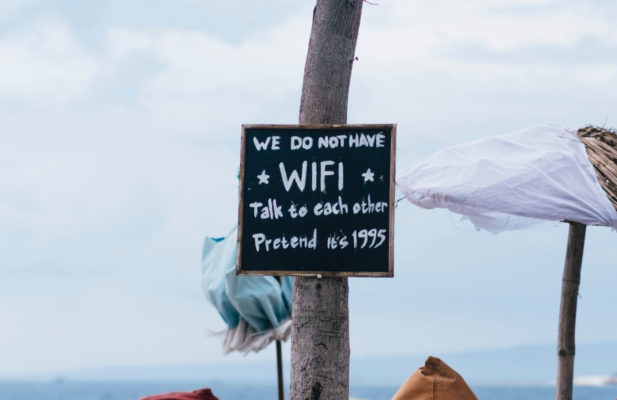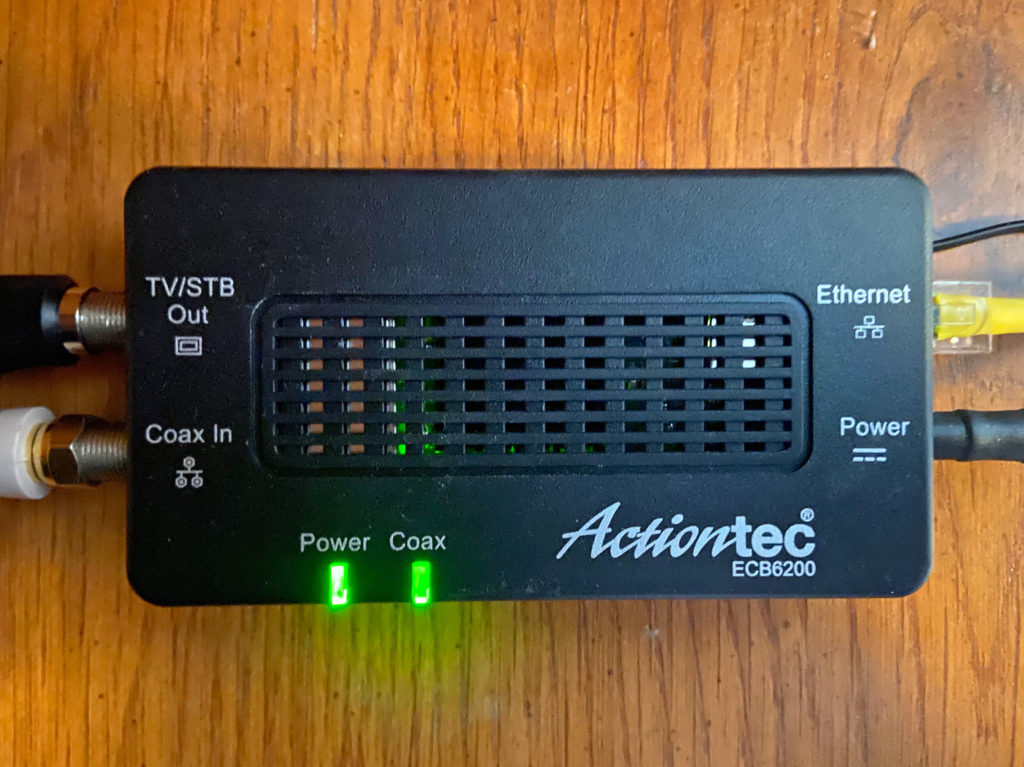
Fighting for WiFi? How MoCA Solved Our Stay-At-Home Bandwidth Problem
When we first moved into our house over a decade ago, we were thrilled to discover that Verizon was one of the service providers in our neighborhood. We signed up for a Fios package that included basic internet at 15/15 Mbps (15 megabits per second maximum upload and download speed). As time went on, they bumped up the speed at no cost until we got to where we are today at 75/75 Mbps. For the most part, this was enough for all of our needs, but over the past year we had been adding more devices and moving towards cutting the cord, and it was becoming clear that 75/75 wasn’t going to satisfy our growing bandwidth needs anymore. It was just about time to make the call when the pandemic hit.
All of a sudden, we had four people in our house who needed to make Zoom calls and stream videos for work and school on a daily basis, and our WiFi couldn’t handle it. I called Verizon about upgrading our router and increasing our bandwidth, but they said it couldn’t be done: our ONT (Optical Network Terminal, it’s the box they install in your garage/basement/closet that connects your home to their network) is too old and can’t handle anything beyond 100/100 Mbps, plus we would need to wait until they were making service calls again to have it replaced. So, what do we do?
This wouldn’t be an issue if we had Ethernet cable running throughout our house. A wired connection is much more stable and the signal isn’t weakened by distance from the router or objects in its path. But running wire through the house would require hiring someone to come poke holes in our walls and get up into our attic – it would be a giant mess, expensive, and like Verizon, no one would be willing to come over to do the work during a pandemic. Like millions of other homes throughout the country, all we have running through our walls is phone, electrical, and coaxial cable. Phone wires can’t handle much bandwidth and networking over electrical lines is notoriously unreliable, which leaves coax. Hmm…
Thinking back, I had never used a coaxial cable to connect a computer directly to a network before. I’ve used a variety of methods over the years: Ethernet, USB, FireWire, ISDN, phone lines, and LocalTalk (I’m really showing my age with that one) just to name a few, but I was never aware of a way to use coaxial cable. That’s when, while searching online, I stumbled across the Multimedia over Coax Alliance, or MoCA for short. It’s a non-profit, international consortium that oversees the MoCA protocol for networking over coaxial cable. What was even more surprising from this discovery is that, like millions of others, we were already using it and didn’t know it.
This process begins by using a MoCA enabled router on your network. Some routers have MoCA built-in and some don’t (check your router’s manual to find out) – for those that don’t, you can purchase a MoCA adapter to connect to the router. As it happens, Verizon’s routers have MoCA built-in. Why? Because of their cable television set top boxes: on a regular basis, these boxes connect to the Internet through your router to retrieve broadcast schedules, show synopses, the current date and time, and other information from Verizon that’s relevant to the TV-watching experience. Cable companies knew that most homes wouldn’t have Ethernet running through their walls, so they needed a way for the boxes to connect to a home’s router using the type of wiring everyone would have: coaxial cable. It made sense for set top boxes to use MoCA – it would be the simplest, most reliable, and most common connection available.

The other thing you’ll need is a MoCA adapter at every other location in your home where you want to connect a device using a coaxial cable. The adapter connects to the coax from your wall at one end and has an Ethernet cable coming out of the other. The other end of the Ethernet cable goes directly into your computer. Conveniently, the adapter has a second coaxial connection in case you don’t want to give up a line to your cable set top box or television. For me, it was literally plug-and-play: within ten seconds of connecting my computer I had a stable Internet connection – no drivers or software needed. Plus, with less devices on our WiFi, those that were still using WiFi had a more stable connection.
In terms of MoCA devices, there’s more than just single-port adapters available: there are also multi-port adapters and WiFi network extenders. Throughout the various articles and reviews that I’ve read, Actiontec’s MoCA products were consistent rated the best and I haven’t been disappointed with their adapters. This was, by far, the quickest and easiest way to reliably extend our home network, and if you’re fighting over WiFi like we were, then I highly recommend exploring MoCA as a solution.
Comments (0)